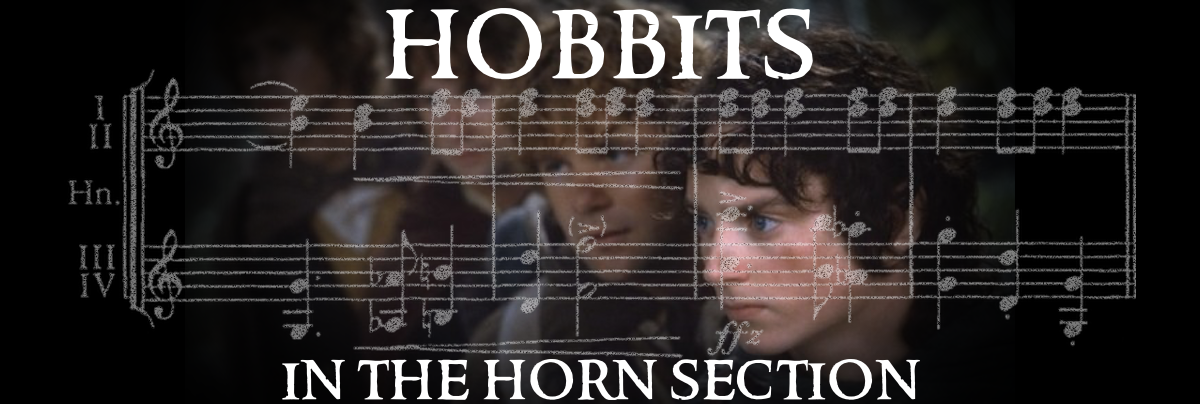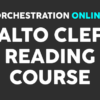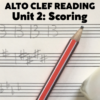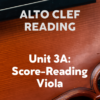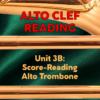Recently in the middle of the current ongoing massive run of 165 evaluations for the 2021 Orchestration Challenge, it occurred to me just how much the horn section resembled the four hobbits of J.R.R. Tolkien’s Lord of the Rings trilogy. This happened in the middle of an evaluation, explaining the traditional roles of each horn player; after which I felt I should expand on the comparison in its own rather whimsical tip. Some of this is already covered in 100 MORE Orchestration Tips’ Chapter 37. Horn Section Teamwork – but perhaps this additional perspective will help keep things straight for orchestrators and composers who are also huge geeks just like me. I may release this as its own video tip in the future, so watch for that next year sometime.
One of the most common problems I run across in scores sent to me for feedback is the handling of horn parts. Often the 1st and 3rd are paired for many bars in very basic harmony playing that’s really the province of the 1st and 2nd as a team. Or the roles of high and low horns will appear arbitrary, in ways that would be easy to fix and furthermore clarify the overall score.
The truth is that the horn quartet has a certain musical and behavioural logic that’s also present in group dynamics of the dramatic kind in a great work of fiction. In this case, you might very well ask “What would Frodo, Sam, Merry, and Pippin do?” and come up with the right solution in your scoring. Let’s look at each character and their resonance to a well-functioning horn section/idiomatic horn scoring. In this analysis, I’m referring to the Hobbits of the original novel, rather than the film trilogy’s sometimes idiosyncratic interpretations.
FRODO BAGGINS/1ST HORN
Obviously Frodo’s character is comparable to first horn. Both have the most responsibility, whether it’s to complete a quest or a major symphony. Upon them is thrust the burden of eloquently stating the core message of the proceedings. Frodo’s musings, observations, struggles, and poetic agonies are like poignantly composed horn solos. When the quartet of hobbits are acting together, there’s no doubt that their focus is always on Frodo with an eye as to where he’ll lead them next – just as the rest of the horn quartet will look to the first for guidance.

Of course, Frodo’s not the ultimate arbiter of what happens, even within his own group of childhood friends. In that role we have Gandalf; who, just like a conductor, directs the overall action (with Aragorn as his worthy concertmaster, picking up the baton when he’s temporarily taken out of the action). But Frodo’s definitely the most knowledgable and experienced Hobbit, with the most useful personal resources. It doesn’t make sense in the story for Merry or Pippin to try to tame Gollum, or be saved in the end by the ultimate providence arising from Gollum’s betrayal. In the same vein, it would make even less sense for 3rd or 4th horn to be the highlighted player that soothes a treacherous and unpredictable current in the music with a context-altering statement of dignity and compassion; or to be nearly overwhelmed by the return of that treacherous current at the apotheosis of the movement.
SAMWISE GAMGEE/2ND HORN
Of all the relationships that make this extended metaphor ring the truest, it’s the comparison of Sam’s bond to Frodo with the support of the 2nd horn to their 1st. Though Frodo respects all his fellow Hobbits, it’s Sam who he trusts to take into the darkest and most dangerous territory. And if a first horn player is going to be faced with pages of tricky intonation playing intervals with another horn player, they’re going to want to be partnered with the player sitting right next to them, the second. Sam’s relationship with Frodo may well be based on the role of the batman or squire – the trusted companion of a knight or high-ranking military officer who has their back in every fight, and helps them outthink problems before they happen. Similarly, a 1st and 2nd will work together closely for years as a team-within-a-team, practically reading each others’ minds in producing unified precise articulations and intonation down to the finest point.

This doesn’t make the second player a substitute leader, though. Even when Sam has to take up The Ring himself for a short while, he knows that his proper role in the story is by Frodo’s side. When all the hobbits are together, Sam defers to both Frodo and Merry; while Pippin seems to have the closest bond with him besides Frodo. This reminds me a bit of how 2nd and 4th horn will often work together in lower support passages, especially when the higher players need to save their lips for the next big push.
These 1st horn/2nd horn relationships often reflect the personal as well as the musical, with friendship, respect, and trust that can last a lifetime. The stronger and healthier the professional culture of an orchestra, the more such relationships can thrive, and the better the music can sound. Horn players brave the most potentially humiliating and nerve-wracking exposure on a weekly and sometimes daily basis, and that kind of struggle over the course of decades can forge a bond between players that’s intimate, subtle, and eventually soul-deep. By the end of the quest, all Frodo and Sam have to do is just look at one another to understand each others’ thoughts. And after many seasons of Brahms, Mahler, and Beethoven, the tiniest twitch of intonation and phrasing is enough to guide one player alongside the other. Keep these two parts together on anything intimate, tricky, integrated, or deeply emotional – unless both parts are screamingly loud, high, and/or technically intricate.
MERIADOC BRANDYBUCK/3RD HORN
Which just leads us to the role of 3rd horn and its resonance with the character of Merry Brandybuck. The start of the book establishes Merry’s role as Frodo’s best friend – at least among his aristocratic relatives. And in fact all main Hobbit characters but Sam share family ties in the intricate web of well-off landed gentry. Frodo is the inheritor of his uncle Bilbo’s estate, which was founded on Bilbo’s father’s solid success as a vintner, not to mention marrying into Took money. This family connection links him to Pippin Took (as we’ll see on 4th horn soon), and to Merry. Both Merry and Pippin are destined to inherit their fathers’ positions as Master of Buckland and Thain of the Shire, respectively. We see this kind of casual air of authority in Merry from Chapter 1 – respectful of Frodo as a natural leader, but without undue deference.

And that is the true mark as well of a good 3rd horn player: ready at any time to step in and take command of the music, and go out into the forefront side by side with the 1st in the most extreme of situations; and yet not necessarily being as intimately supportive or empathic as the 2nd. Oftentimes a 3rd player may be auditioning around for a 1st horn position in another orchestra, and that also defines their role as substitute hotshot. If you’re saving up your 1st player for something deeply intense, the 3rd is a natural for any showy gesture to fill in the time. But don’t let them go on for too long. It’s not their job to carry the Ring to Mordor – though it may be their task to help destroy the chief Ringwraith in the midst of the chaos.
PEREGRIN TOOK/4TH HORN
Sam may be esquire to Frodo. But Pippin is no esquire to Merry. He’s more of a sidekick. The two of them are good friends working together and sharing a laugh out at the edge of the Hobbit foursome. While they’re each close to Frodo, they’re far closer and more trusting and intimate with each other. That’s the 3rd and 4th horn player relationship to a tee, at least in a psychologically healthy orchestra. Pippin is played a bit as comic relief in The Fellowship of the Ring; but as the trilogy progresses, he becomes ever more ennobled and reflective of a deeper humanity by the burdens he see others take on.

Trust Beethoven to exalt this natural nobility of the common man in his own deeply empathetic 4th horn part in the third movement of his 9th symphony. In so doing, he set an example for us all as orchestrators not to treat the 4th horn as an appendage, simply to play low notes in 4-part harmony or unison in a4 melodies. We should expect more from ourselves as composers, and more from 4th horn players as well. So give your 4th horn player something worth doing. Allow them their own story, as Pippin ultimately got his own – though you don’t have to go to Beethovenian lengths in every piece. At the least, recognise the bond between 3rd and 4th, and let them work together similar to 1st and 2nd where needed in the music – as well as the 4th with the 2nd on key low horn scoring.
HOMEWARD BOUND
There’s another interesting (although completely incidental) parallel between the LOTR Hobbits and an average horn section. At the start of the main story of the trilogy, from the second chapter in which the quest is established, the ages of the characters stand thusly. Frodo is a youthful 49-turning-50. Sam is a solid 38 years old. For all his air of maturity, Merry is actually a trifle younger than Sam at age 36; while Pippin is below the age of responsibility for a Hobbit at a mere 28 years. That age range would not be unusual for a horn section, with an older and established 1st chair near 50, the 2nd and 3rd in their mid-to-late 30s, and the 4th as an up-and-coming recent conservatory graduate in their 20s. But just as the book ends – with Merry and Pippin coming into their own as natural leaders of The Shire simultaneous to Frodo stepping back and eventually departing – the 3rd and 4th horn players may eventually audition forward to 1st and 2nd positions, with the 1st and 2nd moving back and then ultimately out of the orchestra.
The horn is perhaps the most delicate and particular collection of compromises in the entire orchestra – and so is the constituency of an ideal horn section. The right people with the right abilities and personalities in the right chairs at the right time can almost seem like something as rare as a Ring of Power, and just as precious. The change of a single player may shake up the whole chemistry of a section, the results of which may take years to stabilise. The least that we can do as orchestrators is to try to strengthen the natural musical relationships that occur within these sections, so that our music can help build new ties of companionship and shared artistic achievement. And while we’re at it, we can remember that our works are a mere step along the road of a much longer intricate journey for these musicians; their own quest through the wonders and terrors of career horn playing.

